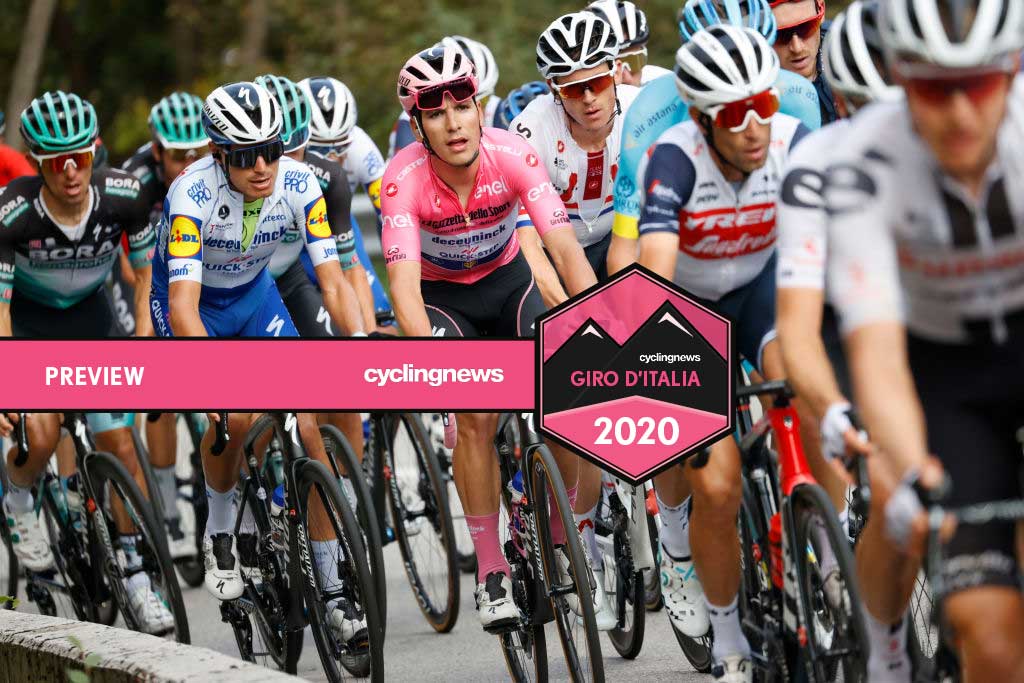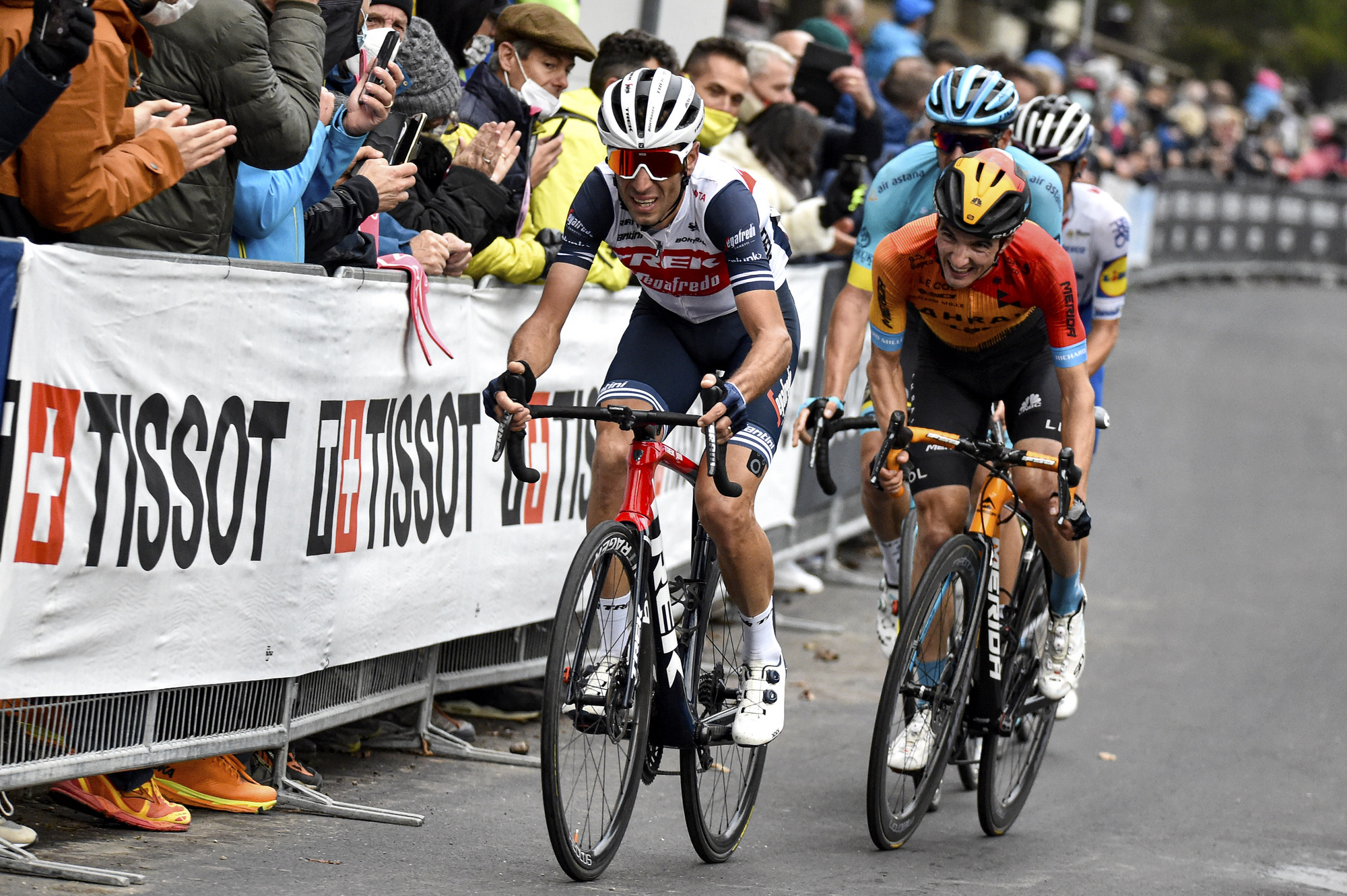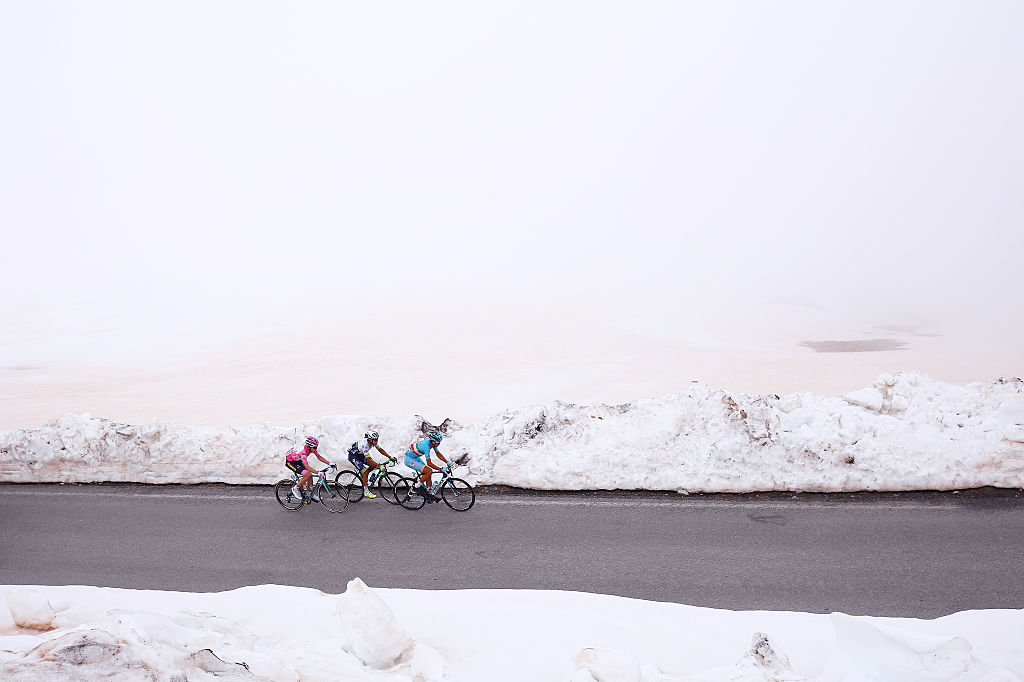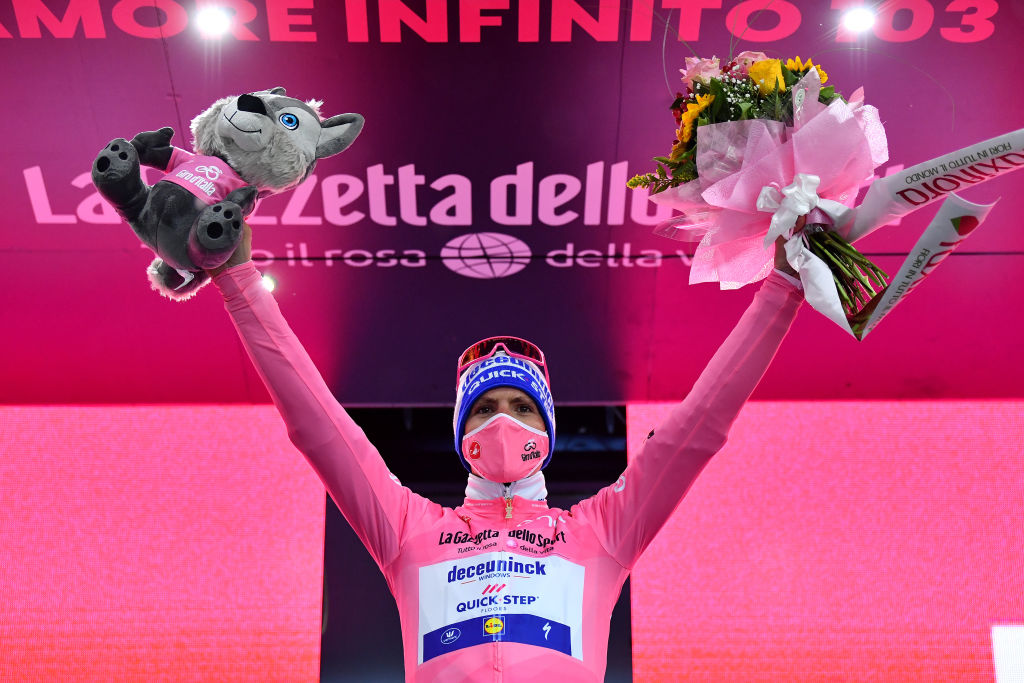Five questions for the final week of the Giro d'Italia
Kelderman the favourite but nothing is certain, least of all this year

"Hope for the best and prepare for the worst." Tao Geoghegan Hart was talking about the weather conditions in the final week of the Giro d'Italia, but the Ineos Grenadiers rider might as well have been referring to everything else too, given that the hardest is yet to come in the most tumultuous race of an already turbulent season.
The reputation of the Giro's third week precedes it, and it has certainly been amplified by the two recent, late turnarounds, namely Vincenzo Nibali's comeback in 2016 and Chris Froome's Finestre miracle two years later. Or, as the journalist Cristiano Gatti put it in Tuttobici (albeit in a piece downplaying the possibility of another Nibali fight back), "It's not just any week that's left: it's the capital Week, the famous Third Week, the mother of all weeks."
The Giro resumes on Tuesday with a hilly finishing circuit around the prosciutto capital of San Daniele del Friuli, which could tempt some GC contenders into action. That antipasto is followed by a hefty helping of mountain passes on stage 17, with the Forcella Valbona, Monte Bondone and Passo Durone preceding a summit finish at Madonna di Campiglio.
A day later comes the tappone of this Giro, which – weather conditions allowing – will see the gruppo tackle the 2758 metre-high Stelvio en route to another summit finish at Laghi di Cancano. A long, flat run to Asti will allow the fast men to uncork one last sprint before another mighty mountain stage on the penultimate day, with the Agnello, Izoard and Montgenèvre preceding the climb to Sestriere. The Giro concludes on Sunday, with a 15km time trial to Milan's Piazza Duomo.
Ahead of those six decisive stages, we look at some of the questions that will define the final week of the Giro.
Can Kelderman finish it off?
Wilco Kelderman begins the last week as the Giro-leader elect, having slashed João Almeida's (Deceuninck-QuickStep) lead to just 15 seconds thanks to a remarkable show of force from his Sunweb team on Piancavallo on Sunday, while established contenders like Vincenzo Nibali (Trek-Segafredo), Rafal Majka (Bora-Hansgrohe) and Jakob Fuglsang (Astana Pro Team) are over three minutes back.
The Dutchman arrived at this Giro as a podium contender, but his status has been elevated incrementally ever since, and he is now the outstanding favourite. Kelderman was already the strongest of the GC contenders at Etna and Roccaraso, but on Piancavallo he showed that he had the strongest team to boot.
Get The Leadout Newsletter
The latest race content, interviews, features, reviews and expert buying guides, direct to your inbox!
The evidence to this point suggests that he should divest Almeida of pink before the weekend and seal victory in the final time trial, but the Giro's logic can sometimes be hard to fathom.
Four years ago, for instance, Steven Kruijswijk was in an even more commanding position at this point, but his race unravelled in a crash on the descent of the Agnello two days from the finish. If Kelderman can avoid mishap or the dreaded jour sans, he should win this Giro.
The men chasing him, meanwhile, will perhaps draw hope from the fact that he hasn't won a race of any description for more than five years. The pressure will become greater as he draws closer to the prize, though Kelderman surely has enough experience to cope.
Will Almeida and the young generation last the pace?
This Giro d'Italia was always likely to herald the arrival of a new force in three-week racing, and so it has proved, albeit in unexpected circumstances given Remco Evenepoel's injury-enforced absence. Debutant Almeida, Evenepoel's teammate, has spent a remarkable two weeks in the maglia rosa, dealing calmly with every situation that has presented itself. Paradoxically, perhaps his most impressive display of this Giro to date came in defeat at Piancavallo, where he battled gamely to retain his overall lead after being dropped by Kelderman et al with 6km to go.
On Monday, Almeida downplayed his prospects of maintaining his slender, 15-second lead to Milan. He was slightly more optimistic about his chances of holding onto a podium place, albeit with the proviso that he could just as easily run aground as he encounters the almost mythical third week for the first time.
Kelderman's Sunweb teammate Jai Hindley (third at 2:56) is also in unfamiliar territory atop the overall standings, though he has raced two Grand Tours already and coped quite well with the demands of the final week on each occasion.
Fourth-placed Geoghegan Hart is a little older and has more experience behind him, but leading a team in a Grand Tour is also a novelty for him. Even so, Astana Directeur Sportif Giuseppe Martinelli suggested the Briton could emerge as Kelderman's main challenger in the Alps.
"He has a team that doesn't miss a beat, they all feel more responsible after Thomas' abandon and he can also take advantage of the work of his rivals," said Martinelli.
None of them could have expected a Giro quite like this when they arrived in Sicily, but Almeida, Hindley and Geoghegan Hart can all play defining roles in the final week.
Can Vincenzo Nibali turn back time again?

When Alex Ferguson managed Manchester United, he used to call the final weeks of the Premier League season 'squeaky bum time,' a reference to how nervous fans (and managers) would squirm in their plastic stadium seats as the pressure mounted. A great part of the mystique of Ferguson's United was built around their ability to withstand the strain of the run-in, to outlast their opponents both mentally and physically.
Nibali's hopes at this Giro rest on similar qualities of endurance, although, as Gatti noted in that Tuttobici piece, "certain miracles haven't happened since 2016." Even so, Nibali's ability to perform in the third week has remained intact these past four years. He hit his stride once the going got tough in the 2017 Giro and conjured up a remarkable solo stage win at Val Thorens at the end of a difficult Tour de France last year.
Nibali currently lies seventh at 3:29 back, and on Sunday's evidence, it looks unlikely that he can extricate himself from this predicament, particular given the paucity of his Trek-Segafredo team. On the other hand, he is only half a minute off a podium place and he will hope that the "capital week" might soon take its toll on Almeida. Recouping the ground on Kelderman seems a tougher ask, but he might find some allies of circumstances in riders like Fuglsang (12th at 5:07).
Or, as Geoghegan Hart put it on Sunday: "I would expect some of the big names didn't come here for 11th or 12th on GC, so maybe they will try something spectacular, Froomey style."
Will the Giro climb the Stelvio, the Agnello and Izoard?

Mountain passes of 2,000m and more have already been unpassable during an early summer Giro, and so much focus will be on the viability of the Stelvio and Agnello in this novel October edition of the corsa rosa.
From the moment the new dates were confirmed, Race Director Mauro Vegni has been adamant that such mountain passes are less at risk in autumn than early summer as there aren't stacks of snow from the winter banked high on the roadside. But while the risk of an avalanche is not as acute in October, there was still a risk that the roads might be impassable given the early snowfall this year.
The most recent reports suggest that the Stelvio is passable and the forecast for Thursday is chilly – a high of 6 degrees Celsius at the summit – but, mercifully, further rain and snow were not expected until the weekend. If that holds, Vegni's tappone might go on unabridged, but if temperatures plummet or the skies open, then the extreme weather protocol might be invoked and the race could be rerouted, perhaps via the Mortirolo.
The weather conditions for the Agnello next weekend look less promising at this early juncture. While Vegni, as ever, has an alternative route as a contingency, he preferred not to discuss such plans when interviewed by RAI on Sunday afternoon.
Will the Giro get to Milan?

The question dominated the second week after Mitchelton-Scott and Jumbo-Visma pulled out of the race following confirmed COVID-19 cases, and the furore was its zenith when EF Pro Cycling suggested an early end to the Giro, citing concerns about the event's coronavirus 'bubble.' That request was promptly denied by the UCI and nerves have calmed, since no further positive cases were reported following additional coronavirus testing at the end of the week.
The mood music could change dramatically, of course, if the PCR tests carried out on all riders and staff on the second rest day – results could be announced as soon as Monday evening – show more positive cases.
Beyond the Giro, Italy recorded its highest number of confirmed COVID-19 cases yet on Sunday evening (11,705), prompting the government to roll out new restrictions on Sunday evening. Prime Minister Giuseppe Conte is opposed to another nationwide lockdown, however, and while amateur sport has effectively ground to a halt, no further curbs have been placed on elite sport, including professional football and the Giro.

Barry Ryan was Head of Features at Cyclingnews. He has covered professional cycling since 2010, reporting from the Tour de France, Giro d’Italia and events from Argentina to Japan. His writing has appeared in The Independent, Procycling and Cycling Plus. He is the author of The Ascent: Sean Kelly, Stephen Roche and the Rise of Irish Cycling’s Golden Generation, published by Gill Books.